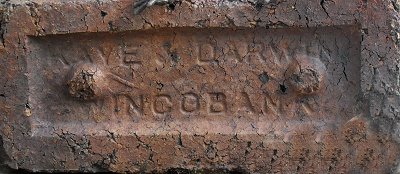

Found by Michaela in Sheffield city centre.

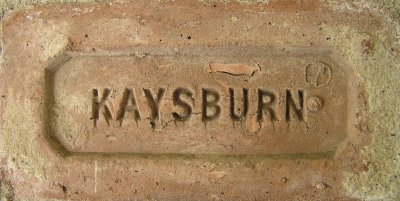
Kaysburn Brick & Tile Works was situated to the north-east of Langley Park in County Durham. It was operating in the 1850s but was closed and the site cleared by 1915.

Tom Keeling, Greyfield, Clutton, Somerset appears in Kelly's Directory for 1902. Photo by Mark Annand.

Sidney Green, Clevedon Potteries & Steam Brick & Tile Works, Strode Road Clevedon. This works is listed in Kelly's Somerset Directory from 1894 to1902. From1910 to 1939 it is Sidney Keen & Brother. This stamp is on a roofing tile. Photo by Mike Chapman.



Found in the Midlands by Alwyn Sparrow,

.jpg)

The Kempston company in Bedfordshire was one of the founding works of the London Brick Co. Photo by Chris Tilney.

David Kennedy was a Scottish born builder and contractor based in Jarrow. He was responsible for a number of public building contracts around the area in the 1860s and 70s. I cannot find any evidence of him making bricks himself and have concluded that he had bricks made by a brickworks that put his name on the bricks he ordered for his business. Photo by Steven Tait.

John Kennedy seems to have started brickmaking at Lathom, Lancashire, and was listed as a drain tile maufacturer there in 1851. In December 1855 he was at the Tile and Brick Works, Scarisbrick. 1861 he was at Scarisbrick as a brick and tile dealer, and a year later was advertising as tile and brick maker there. In 1871 he was listed in the census as a brick and tile maker and was still in business at the end of 1875. Photo by Phil Burgoyne.

Photo by Andrew Kemp.

Photo supplied by A.K.A. Demik.


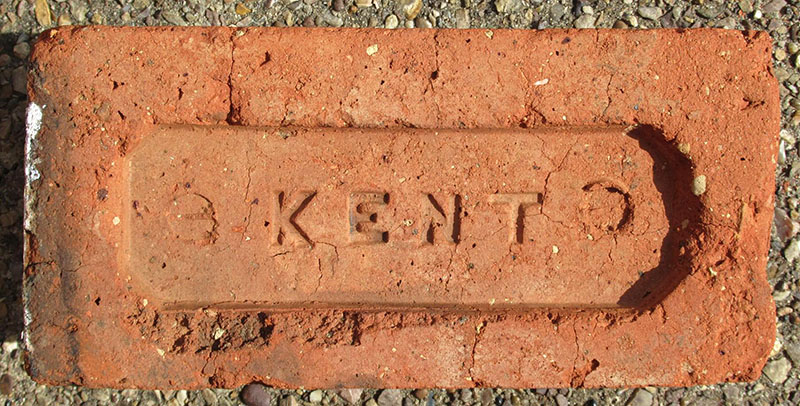

James Kent is listed as brickmaker in Kelly's 1876 & 1881 editions at Stockbrook Lane, Derby. Photos & Info by Martyn Fretwell.

1876 J C KENWOOD & E B WINGFIELD as builders, brickmakers & carriers in
the county of Sussex under the firm of J C KENWOOD & CO. was on 14/08/1876
dissolved by mutual consent.
1881 J C KENWOOD listed as builder & contractor employing 28 men.
1891 J C KENWOOD listed as brick & tile manufacturer at 2 Tower Terrace,
London Rd, & St. Leonards green.
1895 J C KENWOOD & CO. dissolved by mutual consent on 9/2 1895.
In the collection at Bursledon Brickworks Museum. Info by Martyn Fretwell, photo by Nigel Furniss.

Harrop is a district at the north-west of the parish of Rainow, near Macclesfield, where there were a number of small coal and fireclay mines in the nineteenth century. The only known kiln in that area was at Brink Brow north of Further Harrop Farm. Photo and information by David Kitching.

Robert Kershaw, 296 Rochdale Road, Collyhurst, Manchester. Slater's Manchester Directory 1861 - 1871. Photo by David Kitching.
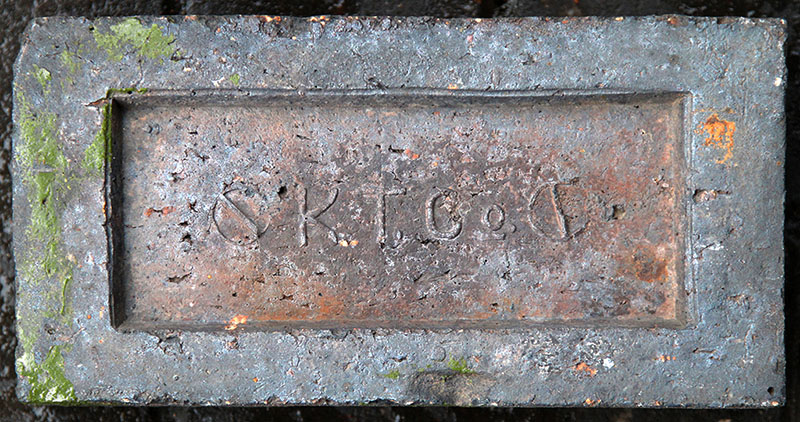
Knutton Tileries Co.
During the later 19th century John Howard Ketley owned, or was the
principal partner in, several undertakings, in connection with the
manufacture of tiles and bricks, extracting the clay to make them,
as well as calcining mine dust to make coal briquettes. He operated
from a site at Knutton, alongside the North Staffordshire Railway
line from Newcastle to Silverdale. From 1907 the tileries were later
operated under the title Knutton Tileries Co Ltd until 1917 and then
as Knutton Tileries Limited until the company was wound up in March
1936 after the business was acquired by G H Downing Co Ltd in 1932.

Ketley Tileries Co.
Photos by David Kitching.
Ketley Brick Company Ltd. Dreadnought Works, Dreadnought Road, Pensnett, Brierley Hill. Kelly's Staffordshire Directory 1880: - Ketley Brick Co., (William Wood, manager) Kingswinford. The Ketley Brick Company is a family business with over a century of tradition manufacturing Staffordshire Blue Bricks and Pavers and is still producing bricks today. Information from Frank Lawson.

Photo by Ceri Owens.
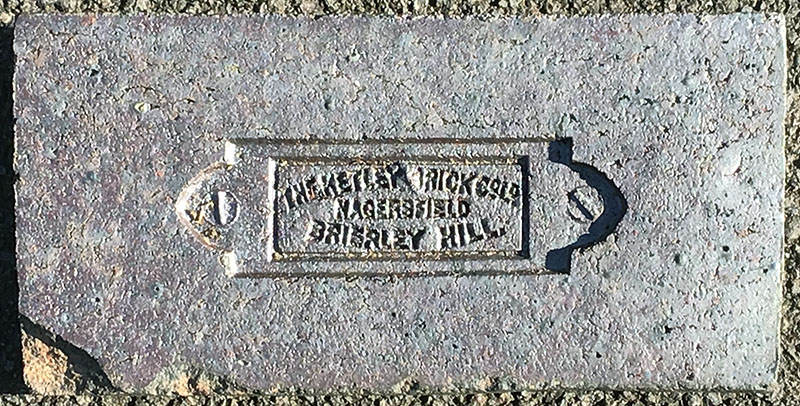
Photo by Peter Prest.


Found at a Spondon reclamation yard.
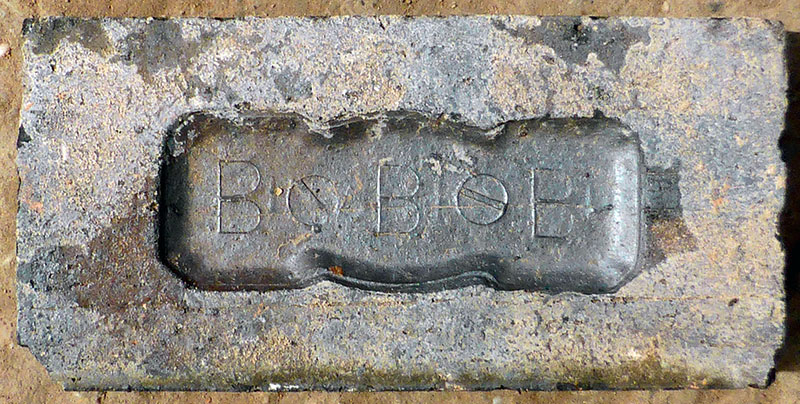


Photo by Colin Wooldridge.

Photo by Chris Tilney.

The A H C in the frog is a trade mark of the Ketley Brick Company, it comprises the initials of the three partners Adcock, Hassall and Cull. Their partnership was dissolved in 1890. Photo by Nigel Furniss.

A fairly modern pavior. Photographed at Four Oaks Reclamation Yard. Photo by Martyn Fretwell.

Photo by Ian Williams.




Made in West Sussex, photo by Richard Symonds.

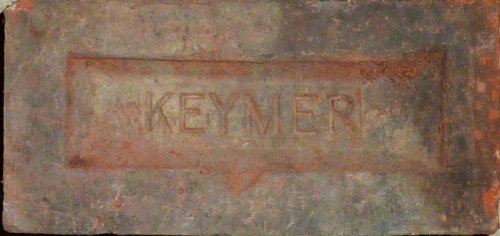

Made on Halifax Road in Wadsley Bridge Sheffield, thanks to Michaela for the photo.

Photo by courtesy of the Frank Lawson collection.

Photo by courtesy of the Frank Lawson collection.


Photo by David Kitching.

Henry Kidd, Hallfield Road, Layerthorpe, York. York Directory 1846 -1872. Photo by Frank Lawson.


Found in Derbyshire, photo by Martyn Fretwell

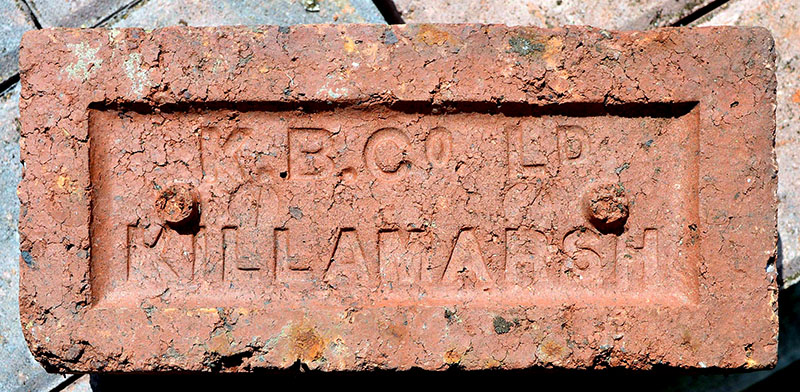
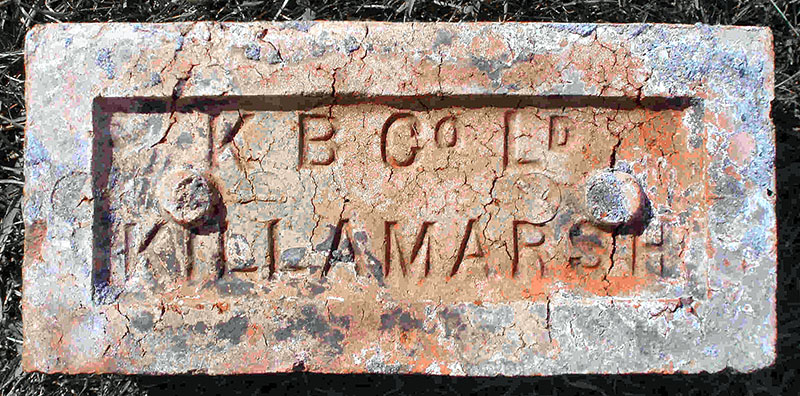
Killamarsh Brick Co Ltd., Killamarsh, Nr. Sheffield. Kelly's Derbyshire Directory 1899. Photos and info by Frank Lawson.

George Thomas Killick, Kintbury, Hungerford, Berks. Listed in trade directories from 1899-1915. He took over the works from Silas S Lovelock in April 1889. Photo by Ian McCarthy.



Photos by Frank Lawson.

Found at Briestfield, Dewsbury, West Yorkshire, by Philip Jervis.


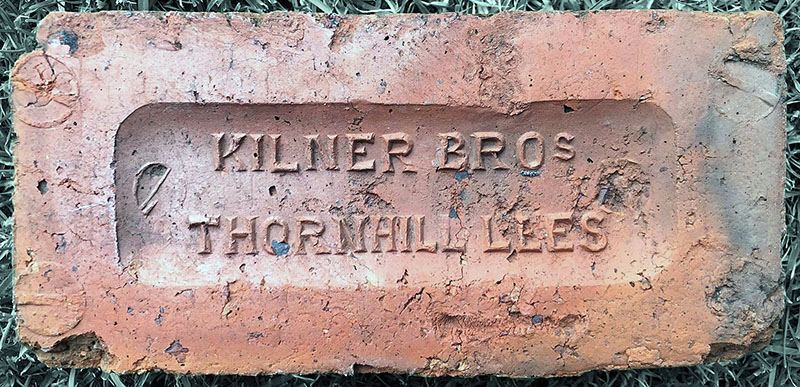
Photos by Jason Stott.

Photo by David Kitching.
Kilnhurst Colliery Brickworks, South Yorks.
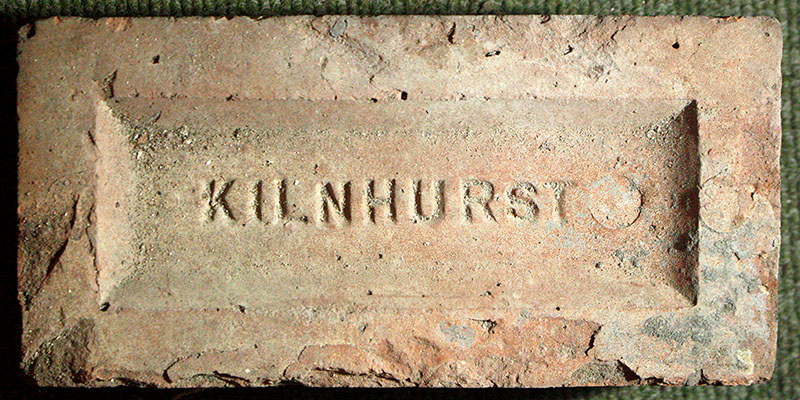

Photo by Jason Stott.

Photo by courtesy of the Frank Lawson collection.
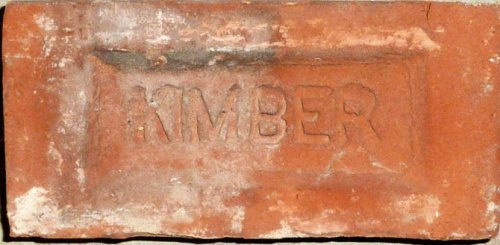

Photo by Richard Lycett.




Joseph King & Co, Stourbridge, Chapel Terra Cotta Works, Park
Lane, Cradley, Halesowen. West Midlands. Kelly's Trade Directories from 1870 to 1888 list this entry - J. King (red & blue), Netherend,
Stourbridge. The business seems to have closed between 1908 and 1912. Photos by Martyn Fretwell.
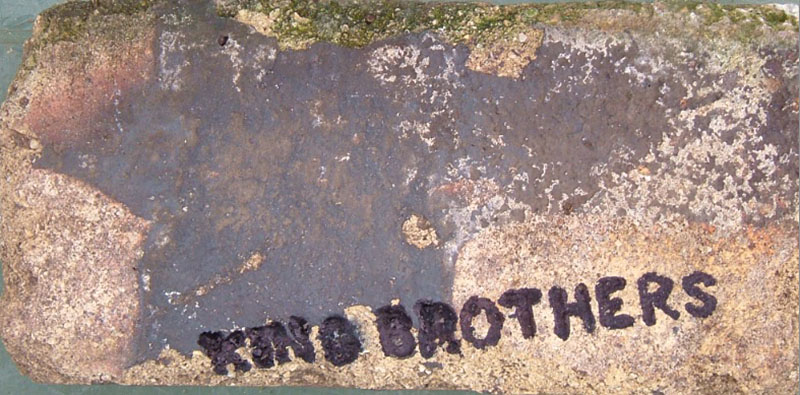
King Brothers, Stourbridge Fire-clay Works, Netherend 1860 - 1955.
Manufacturers of fire bricks, glasshouse pots, crucibles, retorts
and all fire-clay goods.
Found at the site of Towcester Company Iron Works, in production
1875-78, for iron smelting. Photo and info by Nigel Furniss.

Recovered by Glamorgan - Gwent Archaeological Trust from the
Cyfarthfa Ironworks Coke Yard site at Merthyr Tydfil, photo by
Richard Paterson.

Photo by Chris Graham.

Photo by Greg Julian.

Photo by Frank Lawson.
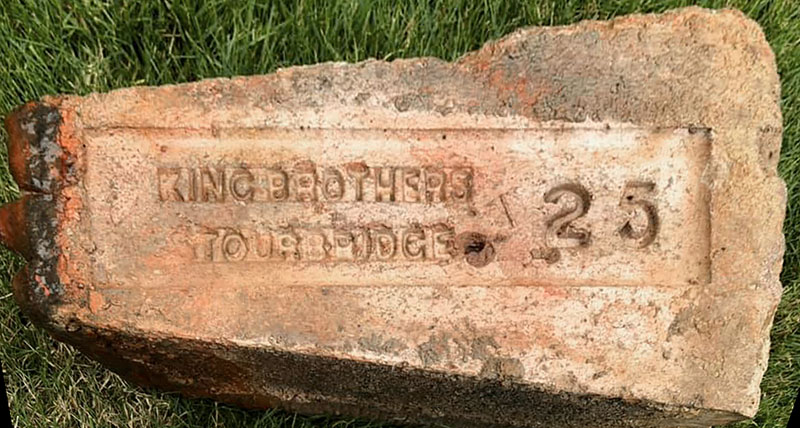
Photo by Jason Stott.

Joseph & William King were in partnership in running this firebrick works which is listed in Kellys 1860 to 1900 edition at Netherend. Then Joseph King owned the Chapel Terra Cotta Works, Cradley on his own producing red bricks & terracotta. The 1901 OS map shows that the two works where situated nearly opposite one another on Park Lane, Netherend. Photo & Info by Martyn Fretwell.



King Street Brick Works in Hindley, between Wigan and Bolton, was operated by Samuel France who was also proprietor of the nearby Royal Hotel. The works was auctioned off in 1892 and it seems that France transferred his business to another, as yet unidentified, works in the area. The significance of Platt and Lever on the reverse of the brick is not clear. Photo by Frank Hilton.


Found at Brampton, Cumbria, from the works at Kingmoor, Carlisle.
Information from Angus Glasgow suggests the site operated 1896 -
1956 and was known as Moorville Brickworks from 1952. Image PRBCO.

In 1952 John Laing & Son took over the Kingmoor Brickworks in Carlisle and it was subsequently known as Moorville Brickworks. Production ceased four years later in 1956 but the building were standing up until the mid 1960s. Info & photo by Chris Graham.

Found at Maryport and thought likely to be Moorville Kingmoor. Photo by Mark Cranston.





The Kingswood Reformatory (Borstal) on the outskirts of Bristol began to develop brickmaking in about 1859 as a trade for the boys sent there. The works developed to employ a large number of boys and by 1872 a circular Hoffmann kiln had been erected. Production eventually ended in 1884 by which time it was considered that the trade was not conducive to good order amongst the boys. Photos by Eric Taylor.
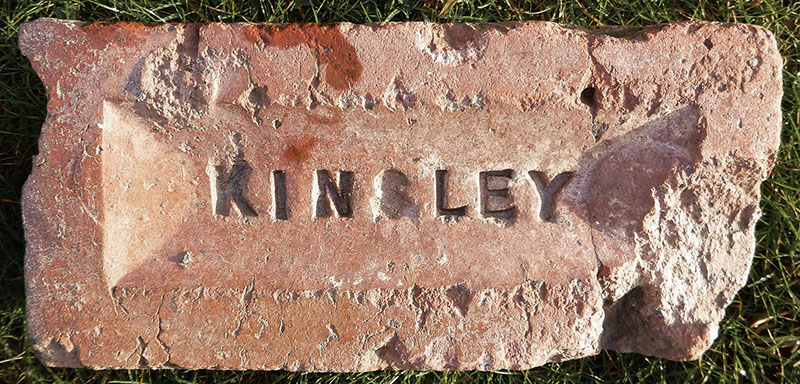
Kinsley is located 1.5km North-west of Hemsworth in West Yorkshire, contiguous with Fitzwilliam. Image PRBCO.

The first listing of the business I have found is for 1889. The 1931 Kelly's Directory lists Kinson Pottery Ltd (wire cuts & salt glazed), Parkstone & Hamworthy Junction, Poole, Dorset. Also orginal manufacturers in the district of the celebrated Sand-Lime facing bricks in all shades; also makers of hand-made multi-facing bricks. Photo by Andrew Florey.


Kirk & Sons, Wakefield Road, Normanton, West Yorks. White's Clothing District Directory 1894. A brickworks was founded in the 1890s by a Thomas Kirk from Nottingham, who had heard rumours that Normanton was rapidly turning into an important junction on the railways. Both Kirk and his sons used their life savings and formed the Normanton Brick Company. Photos and info by courtesy of the Frank Lawson collection.


William Kirkham, London Road, Stoke-on-Trent. The works is listed from 1868 to 1880. Photos by David Kitching.

Photo by David Kitching.




Made at Kirkheaton Brickworks, Huddersfield. Kirkheaton bricks were manufactured by Elliott's Brickworks Ltd., who also owned Kirkheaton Brickworks Ltd and Kirkheaton Fireclays Ltd., from around 1935 until 1960. Before this Benjamin Elliott and Sons Ltd. had operated brickworks at Spa Bottom Lepton and Fenay Bridge. Benjamin also owned Lodge Mill Colliery which operated nearby in the early 20th century. Much of the coal produced was used in the company brickworks. Benjamin died in February 1928 at Cop Riding Farm, Lepton. In early life he had become a partner in Grange Ash Colliery before sinking the Lodge Mill pit. He later took control of the Flockton Coal Company Ltd. and founded the Fenay Bridge Brick and Tile company. George, Frederick and Stanley Elliott were also involved in the brickmaking business. Elliotts finally went out of business in 1990. Photos and info by Frank Lawson.
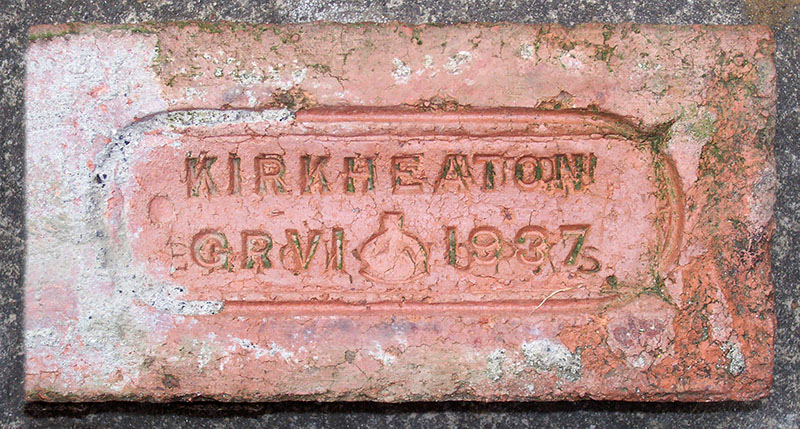

Photo by David Kitching.


Photo by Phil Burgoyne.

Photo Mark Cranston.

Recovered from the old Hoover Factory, Cambuslang, Glasgow. Photo by Mark Cranston.
The Kirkhouse brickworks was built on part of the Naworth Colliery workshop and office site at Kirkhouse using shale as a raw material for brickmaking. Bricks were made by two Bradley and Craven machines. There was a continous kiln and two smaller semi-continous kilns. After the 2nd World War production was increased with the introduction of a wire cut machine. The works was still operating in 1969. Info from Graham Brooks, http://www.solwaypast.co.uk/index.php/bricks/14-brick/82-cb.

Kirkstall brickworks operated in the early 20th century at Wyther Lane, Kirkstall, Leeds. Listed in Robinson's directory of 1904 as the Kirkstall Brick Company. Image PRBCO.

Major Kirkup, who was a farmer at Lanchester in 1841, decided to try his fortune as a brick manufacturer and went into partnership with F Renwick at Low Shitlington. That partnership ended in 1851 and by 1850 Kirkup was already making firebricks at Monkwearmouth. He then moved his business to Jarrow in 1854 but that business ended in bankruptcy in late 1856. The works lease was sold in 1857. Kirkup died in January 1859 at Monkwearmouth. Photo by Steven Tait who found this at Hebburn, not far where this brick was made at Jarrow.

Edward Kitchener opened the Harlington Brickworks at Westonng, Bedfordshire, c1922-24. The ownership had passed to R Fielding & Son by 1931. Photo by Martyn Fretwell, info from Survey of Bedfordshire - Brickmaking A History and Gazetteer.

Photo by David Kitching.

Joe Kitson & Sons Ltd, Denby Dale. Denby Dale lies 11km west of Barnsley on the Holmfirth Road. First listed in trade directories, 1881. Operating in 1974 as a member of the Hepworth Group, Image PRBCO.
.jpg)
The letters have been reversed, Found at Denby Dale, West Yorks by
Frank Lawson.
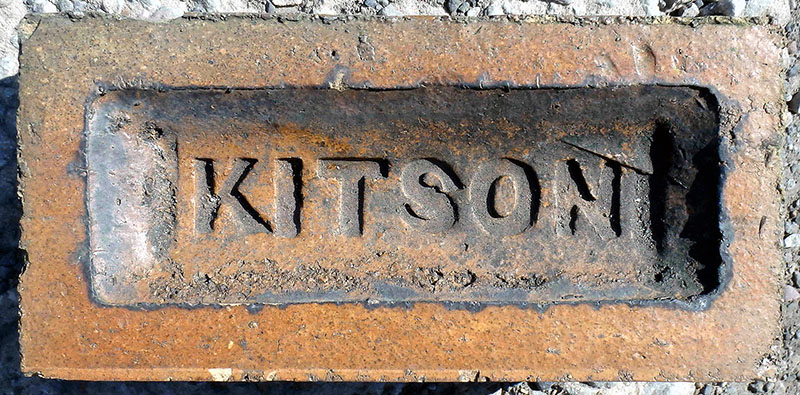


Photos by Frank Lawson.



Found to the west of Newcastle-on-Tyne. In the mid 19th century Kleudgen & Co operated in Hartlepool as coal merchants and shipping agents. Photo by Chris Graham.

Found at Newfield Durham. Photo by Steven Tait.



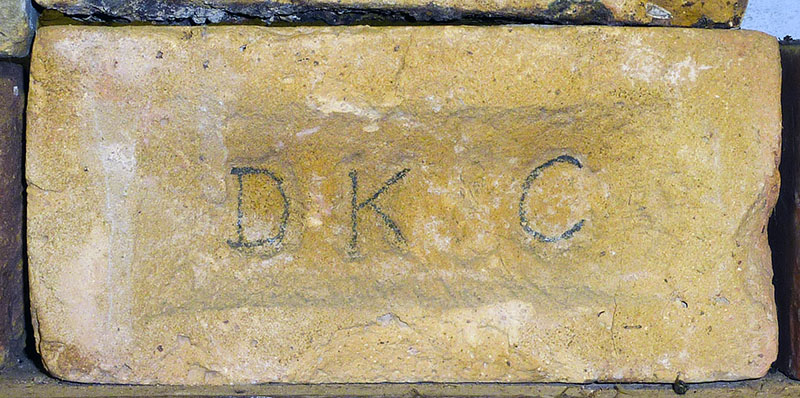
Kellys 1862 to 1871 editions list Dale Knapping as the proprietor of
the Shoeburyness Brickworks, South Shoebury, Southend with Edward
Cook listed as manager. Kellys 1878 edition now records J. Jackson
& Co. as the owners of the works. Found that Dale Knapping was a
Justice of the Peace in Southend & he built the National School
in 1862 on the site of St. Peters Church for his workers children.
The Knapping Family had been the Lords of Shoebury Manor. Photo
& Info by Martyn Fretwell.

Found in Belize and photographed by Bob Cooney.

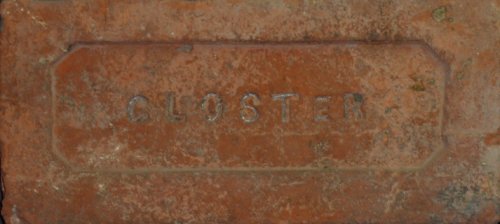


George Enoch Banister Knighton, Tupton, Derbyshire. Kelly's Directory 1895 to 1912. The works was east of Clay Cross Station and the connection was known as Knighton's Siding. Photo by Martyn Fretwell.

William Watts Clarkson owned the Knighton Junction Brickworks on Welford Road, Leicester from at least 1877, employing 74 men. He retired from the business in 1888. The Knighton Junction Brick Company first appears in Kelly's 1891 edition with James Squires as Manager & as wrote previously this company was formed around 1888 & was owned by Orson Wright, a local builder. The kilns were derelict in the 1950's and the site now has student flats (Nixon Court) built on it, belonging to Leicester University. Info by Martyn Fretwell, photo by Frank Lawson.


Daniel Knights is first listed as manager at the Lucas Brothers
brickworks at Somerleyton, Suffolk in Kellys 1869 edition. Daniel
Knights then takes over this brickworks & he is listed in own
name in Kellys 1875 & 1888 editions. Kellys 1892 edition now
records Henry Knights at the works. We then find Kellys 1896 edition
lists Henry Knights as brickmaking in Burgh Castle, Norfolk &
his former Somerleyton works had been taken over by the Somerleyton
Brick Co. in 1893. Also see Lucas Brothers, Somerleyton Brick Co.
& Norfolk & Suffolk Brick Co. entries as they are all the
same works. Photos by Frank Lawson, info by Martyn Fretwell.

Henry Knights is first listed in Kellys 1892 edition at a brickworks in Somerleyton, Suffolk previously worked by Daniel Knights. Kellys 1896 edition now records Henry Knights at a brickworks in Burgh Castle near Great Yarmouth. The 1882 OS map shows a small brickworks situated on Porter’s Loke (Loke is a private road or lane) and which is assumed to be the works operated by Henry Knight around 1896 as the much larger Burgh Castle Brickworks next door was owned by the Burgh Castle Portland Cement Co. from 1875 to 1892, then the Burgh Castle Brick Co. Ltd. from 1892 to 1904. It is unknown at which works (Somerleyton or Burgh Castle) this HK brick was made. Henry's small Burgh Castle brickworks is not shown on the 1900 OS map. See Burgh Castle entry. Photo & Info by Martyn Fretwell.


David Oliver writes: This one is Knitsley Refractory Products and was based on Knitsley Fell near Wolsingham in County Durham where a Ganister rock (a hard sandstone) was quarried to make Silica bricks. In 1937 a shale quarry was opened and red facing and common bricks were made. This closed in 1940 due to the effects of the war and never reopened, although ganister was quarried until 1963. Photos by Chris Tilney.

Photo by Neville Akers.

Photo by Liz Robinson.

Andrew Knowles & Sons Ltd. was a colliery company that operated on the Manchester Coalfield in and around Clifton, Lancs. They owned several Collieries in the Irwell Valley area including Agecroft and Pendlebury. In 1929 the company became part of Manchester Collieries. The associated brickworks was probably that established c1900 on Cliveley Road, Pendlebury, close to Wheatsheaf (Pendlebury) and Clifton Hall collieries. Photo by Jason Stott.
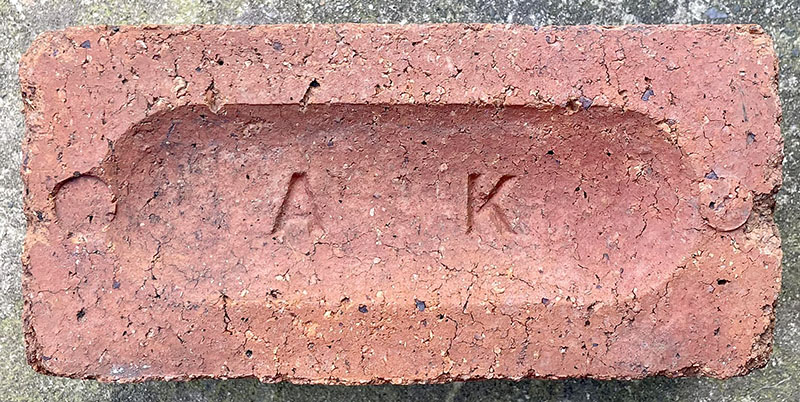
Photo by Phil Burgoyne.

The Knowles brickworks at Furness Vale, Derbyshire, survived until the 1980s. Photo by David Kitching.

Photo by Ian Sneyd.

Photo by David Kitching.


Photos by Phil Burgoyne.
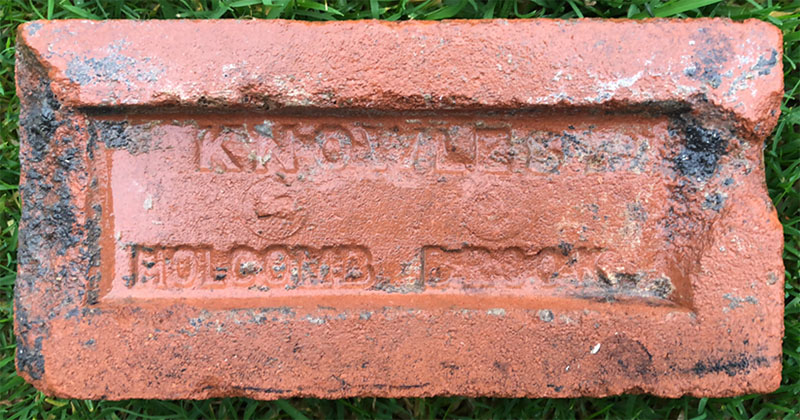
Photo by Jason Stott.

Photo by Stuart Harrington.
Mark Duggins writes: Wooden Box is the old local name for Woodville, near Swadlincote in Derbyshire, so named because the toll booth was a large old barrel from one of the nearby Burton-on-Trent breweries. Knowles is the name of the old pipeyard there, who once provided salt-glazed sewerage worldwide, so was probably used for packing on a delivery to Patagonia.
A full history of the Mount Pleasant works may be read here.

Photo by courtesy of the Frank Lawson collection, found at Pye
Bridge in Derbyshire

Photo by Ian Suddaby.



Photo by Christopher Dixon.